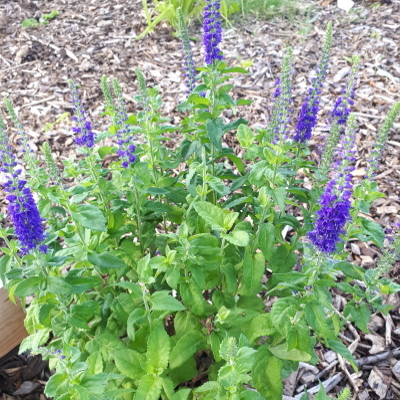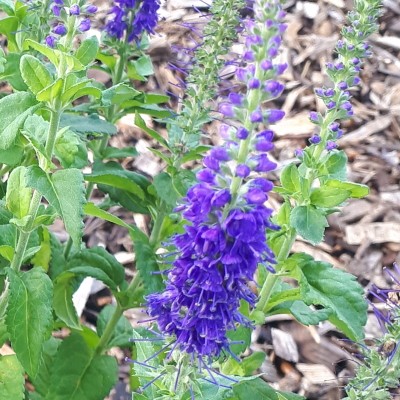-
Out of stock
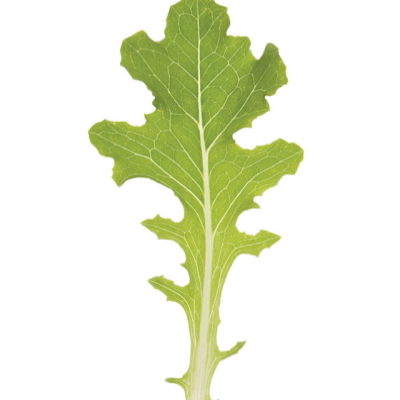 The unique and varied oak style leaf of Bolsachica Organic adds loft and character to baby leaf salad mixes. The leaves are medium to dark green and a bit thicker than others. They grow almost straight upright which makes baby leaf harvesting much easier. Grow this baby leaf lettuce in trays or containers. Cut outside leaves and let inside leaves for future harvests.
The unique and varied oak style leaf of Bolsachica Organic adds loft and character to baby leaf salad mixes. The leaves are medium to dark green and a bit thicker than others. They grow almost straight upright which makes baby leaf harvesting much easier. Grow this baby leaf lettuce in trays or containers. Cut outside leaves and let inside leaves for future harvests. -
Out of stock
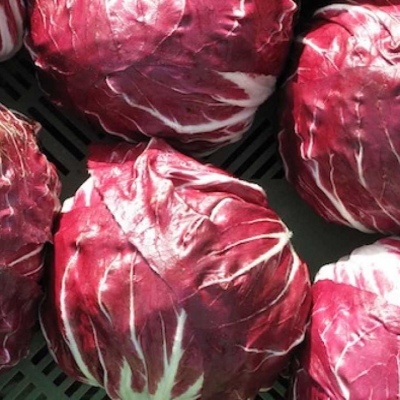 Although this is called a challenging crop to grow, it is not quite so challenging in the Calgary climate. It does take a bit more work but the use of the young leaves then heads later makes the work more than worthwhile. The young fresh heads are a visual delight for the eyes and a culinary treat for the taste buds! A spreading, leafy plant producing open, round heads 5-10 cm in diameter. Beautiful dark red leaves that withstand considerable frost. Follow our planting instructions for our foolproof method of growing great Radicchio. A cold frame or a basement is all that's needed to enjoy these culinary delights.
Although this is called a challenging crop to grow, it is not quite so challenging in the Calgary climate. It does take a bit more work but the use of the young leaves then heads later makes the work more than worthwhile. The young fresh heads are a visual delight for the eyes and a culinary treat for the taste buds! A spreading, leafy plant producing open, round heads 5-10 cm in diameter. Beautiful dark red leaves that withstand considerable frost. Follow our planting instructions for our foolproof method of growing great Radicchio. A cold frame or a basement is all that's needed to enjoy these culinary delights. -
Out of stock
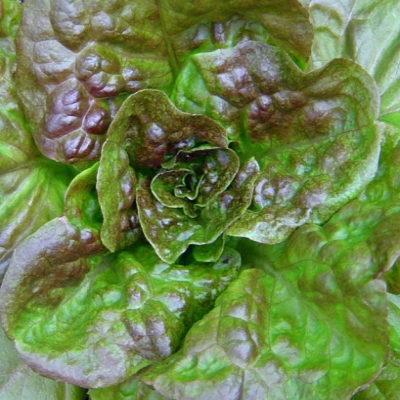 Bronze Mignonette is a Butterhead Heirloom Lettuce Bronze Mignonette is a heat-tolerant and slow to bolt butterhead lettuce variety that has been around for over 100 years. It's bronze leaves are crisp and perfect for salads and sandwiches Frilled green leaves have a bronze tinge with a cream coloured heart. Large heads and tender buttery leaves tipped in red are a rare treat. Plants need plenty of space to reach the full potential of this lettuce so keep plants 45 cm apart. Plant in lots of organic well-drained fertile soil. Harvest early in the morning to obtain the best flavour. Keep soil evenly moist for best growth. Plant every 2 weeks from early spring until August to maintain fresh crop all summer.
Bronze Mignonette is a Butterhead Heirloom Lettuce Bronze Mignonette is a heat-tolerant and slow to bolt butterhead lettuce variety that has been around for over 100 years. It's bronze leaves are crisp and perfect for salads and sandwiches Frilled green leaves have a bronze tinge with a cream coloured heart. Large heads and tender buttery leaves tipped in red are a rare treat. Plants need plenty of space to reach the full potential of this lettuce so keep plants 45 cm apart. Plant in lots of organic well-drained fertile soil. Harvest early in the morning to obtain the best flavour. Keep soil evenly moist for best growth. Plant every 2 weeks from early spring until August to maintain fresh crop all summer. -
Out of stock
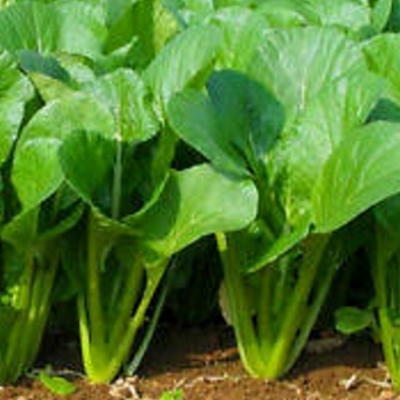
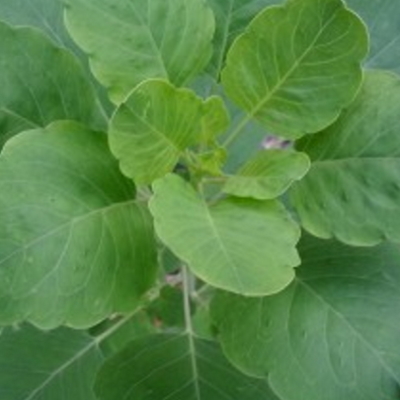
Ethiopian Kale matures in 40 days. Technically, a Mustard, Ethiopian Kale is an unusual leafy green. The hearty leaves have a very complex flavor with overtones of spice and garlic. Great for picking at the baby size in under 3 weeks, or waiting for fully grown leaves. Ethiopian Kale works great makes delicious salad mix, standalone raw, or lightly cooked. An extra cold-tolerant and drought-resistant crop. If you're going to try only one new green this year, Ethiopian Kale should be your first choice.
-
Out of stock
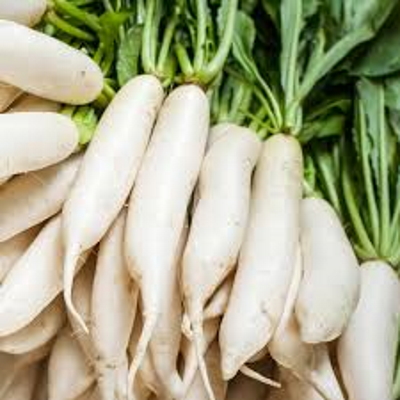 A very popular mild flavoured Japanese radish that resembles a large white carrot. Crisp, tender roots average 20 cm in length and 7 cm in diameter. The vitamin-rich roots are superb when eaten raw, sliced in salads, or peeled and diced for soups and stews. Try leaving some to grow seed pods which are delicious in salads or save your seeds for future plantings. Radishes thrive in very loose rich soil, plenty of water, and best grown in cooler weather.
A very popular mild flavoured Japanese radish that resembles a large white carrot. Crisp, tender roots average 20 cm in length and 7 cm in diameter. The vitamin-rich roots are superb when eaten raw, sliced in salads, or peeled and diced for soups and stews. Try leaving some to grow seed pods which are delicious in salads or save your seeds for future plantings. Radishes thrive in very loose rich soil, plenty of water, and best grown in cooler weather. -
Out of stock
 This delightful Japanese Catmint has many merits. Both the foliage and the flowers are fragrant. It blooms the first year from seed, unlike most perennials. It is upright and nicely branched, rather than sprawling. Make it a centerpiece of your containers and sunny-to-partly-shaded garden areas! Panther Dark Blue walked off with the Bronze Medal at Holland's prestigious Plantarium competition in 2015. The attractive little plant is much more compact than other catmint species, standing just 20 cm high and 25 cm wide. The foliage is bright green, glossy, and toothed, releasing a strong, heavenly fragrance from spring through fall. Profuse bloomer! Medium to dark blue, these tubular flowers reach up to 5 cm long, held in nice clusters on the top of the plant. The blossoms are fragrant, and they begin in early summer and go right through into early fall. You'll be amazed by the flower power of this petite plant.
This delightful Japanese Catmint has many merits. Both the foliage and the flowers are fragrant. It blooms the first year from seed, unlike most perennials. It is upright and nicely branched, rather than sprawling. Make it a centerpiece of your containers and sunny-to-partly-shaded garden areas! Panther Dark Blue walked off with the Bronze Medal at Holland's prestigious Plantarium competition in 2015. The attractive little plant is much more compact than other catmint species, standing just 20 cm high and 25 cm wide. The foliage is bright green, glossy, and toothed, releasing a strong, heavenly fragrance from spring through fall. Profuse bloomer! Medium to dark blue, these tubular flowers reach up to 5 cm long, held in nice clusters on the top of the plant. The blossoms are fragrant, and they begin in early summer and go right through into early fall. You'll be amazed by the flower power of this petite plant. -
-
Out of stock
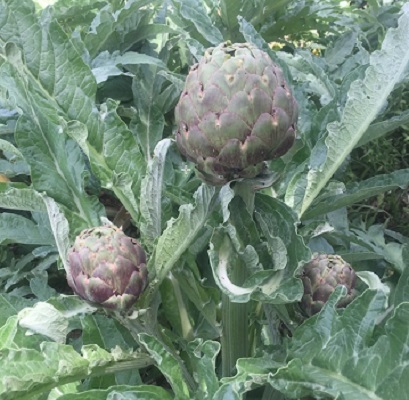
 Start seed indoors in a soil-less mix 8-12 weeks before the last frost date in your area. Sow the seed 6 mm (1/4″) deep and germinate at 21-26 C (70-80 F). When seedlings are 2.5-5 cm (1-2″) high transplant to individual 10 cm (4″) pots and grow on at 15-21 C. Harden off and transplant to the garden after the threat of frost has passed. Artichoke does best in full sun with a deep, organic, fertile soil. Space plants 60-90 cm (24-36″) apart in the row with rows 1.75 m (6′) apart. Keep plants evenly watered and mulch the soil to help preserve soil moisture and keep the soil from becoming too warm in summer. If the soil does become too warm, it can trigger a summer dormant period. Start with a thin layer of mulch and build it up to 10 cm (4″) thick as the plants grow.
Start seed indoors in a soil-less mix 8-12 weeks before the last frost date in your area. Sow the seed 6 mm (1/4″) deep and germinate at 21-26 C (70-80 F). When seedlings are 2.5-5 cm (1-2″) high transplant to individual 10 cm (4″) pots and grow on at 15-21 C. Harden off and transplant to the garden after the threat of frost has passed. Artichoke does best in full sun with a deep, organic, fertile soil. Space plants 60-90 cm (24-36″) apart in the row with rows 1.75 m (6′) apart. Keep plants evenly watered and mulch the soil to help preserve soil moisture and keep the soil from becoming too warm in summer. If the soil does become too warm, it can trigger a summer dormant period. Start with a thin layer of mulch and build it up to 10 cm (4″) thick as the plants grow. -
Out of stock
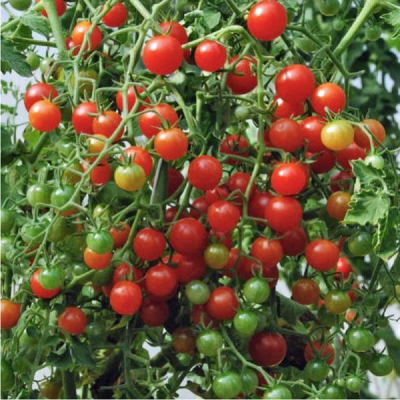 Red Currant plants produce copious quantities of small 1 cm, deep red tomatoes that are exceptionally sweet and packed with flavour. They typically require around 75 days to reach maturity, and make a good choice for containers and hanging baskets, though they are indeterminate growers. Currant tomatoes are native of Peru and Brazil. It was illustrated by Louis Feuille in 1725 Perfect for snacking tomatoes directly from the garden. Great for summer salads. Fruits from early summer until fall frost. Each plant produces 1000's of tiny tomatoes. Best for hanging baskets.
Red Currant plants produce copious quantities of small 1 cm, deep red tomatoes that are exceptionally sweet and packed with flavour. They typically require around 75 days to reach maturity, and make a good choice for containers and hanging baskets, though they are indeterminate growers. Currant tomatoes are native of Peru and Brazil. It was illustrated by Louis Feuille in 1725 Perfect for snacking tomatoes directly from the garden. Great for summer salads. Fruits from early summer until fall frost. Each plant produces 1000's of tiny tomatoes. Best for hanging baskets.
